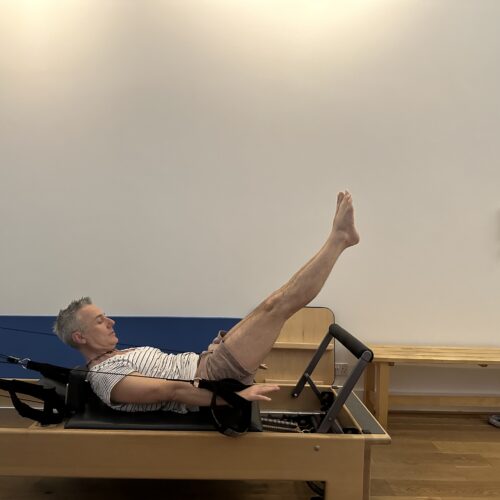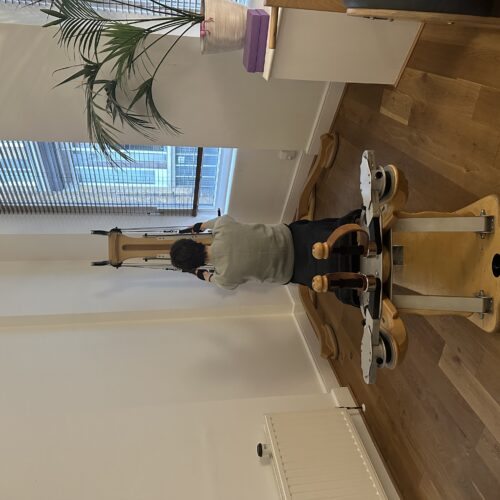The Pilates Method has changed dramatically since Joe was alive and teaching in his New York City studio. At first, it was mainly dancers and actors that came to his studio. There were very few mat work classes, Reformer classes did not exist. Traditionally, the client’s session started with matwork, progressing onto apparatus such as the Reformer, Cadillac, Reformer, Wunda Chair, Armchair and Ped-a-Pull. Joe based his work on his principles – Breathing, centering, concentration, control/precision, flow, stamina/strength. He adapted his work to suit the needs of his clients whether it was to challenge or modifying for an existing injury or condition.
Studio classes: PYM studio sessions are 1 hour and 15 minutes in length. Bookings are structured so that there are never more than four clients in the studio at any given time. Each client works with the teacher separately and their sessions are closely monitored and adapted as and when needed. At PYM, our main focus are the individual needs of each of our clients therefore we do not teach in a prescriptive and formulaic way. This requires skill stemming from an in-depth training as the base-line.
Mat Work classes: ( Not offered at PYM). Since the 1980s’, mat work popularity has soared partly because it was more accessible and affordable. When choosing a class, ideally look for one with smaller numbers. Classes that are too big result in the teacher’s inability to offer individual corrections and safeguard students from getting injured. Check where your teacher trained ideally a comprehensively training which includes all the Pilates apparatus.
Pilates Reformer classes are a recent phenomenon, ranging between three to 20 reformers in a room -with one reformer per person. Big Pilates reformers classes goes against the grain of the Pilates Method which has always focused on the individual client’s needs. The Pilates industry has raised concerns on those places that are offering quick teacher trainings to keep up with demand. A ‘one size fits all approach’ has never been part of Pilates. It has resulted in teachers not being trained in the full body of the work or even aware of its expansive diversity – a further diluting of the Pilates Method. It is important therefore to check the credentials of the teacher. Pilates teacher training is an in-depth training which includes anatomy, physiology, knowledge of common injuries, conditions and teaching skills. They should be able to adapt to the needs of the individual client and have the skills to teach a class of mixed abilities.
For more information, please contact:
societyforthepilatesmethod.com
History of Joseph Pilates


